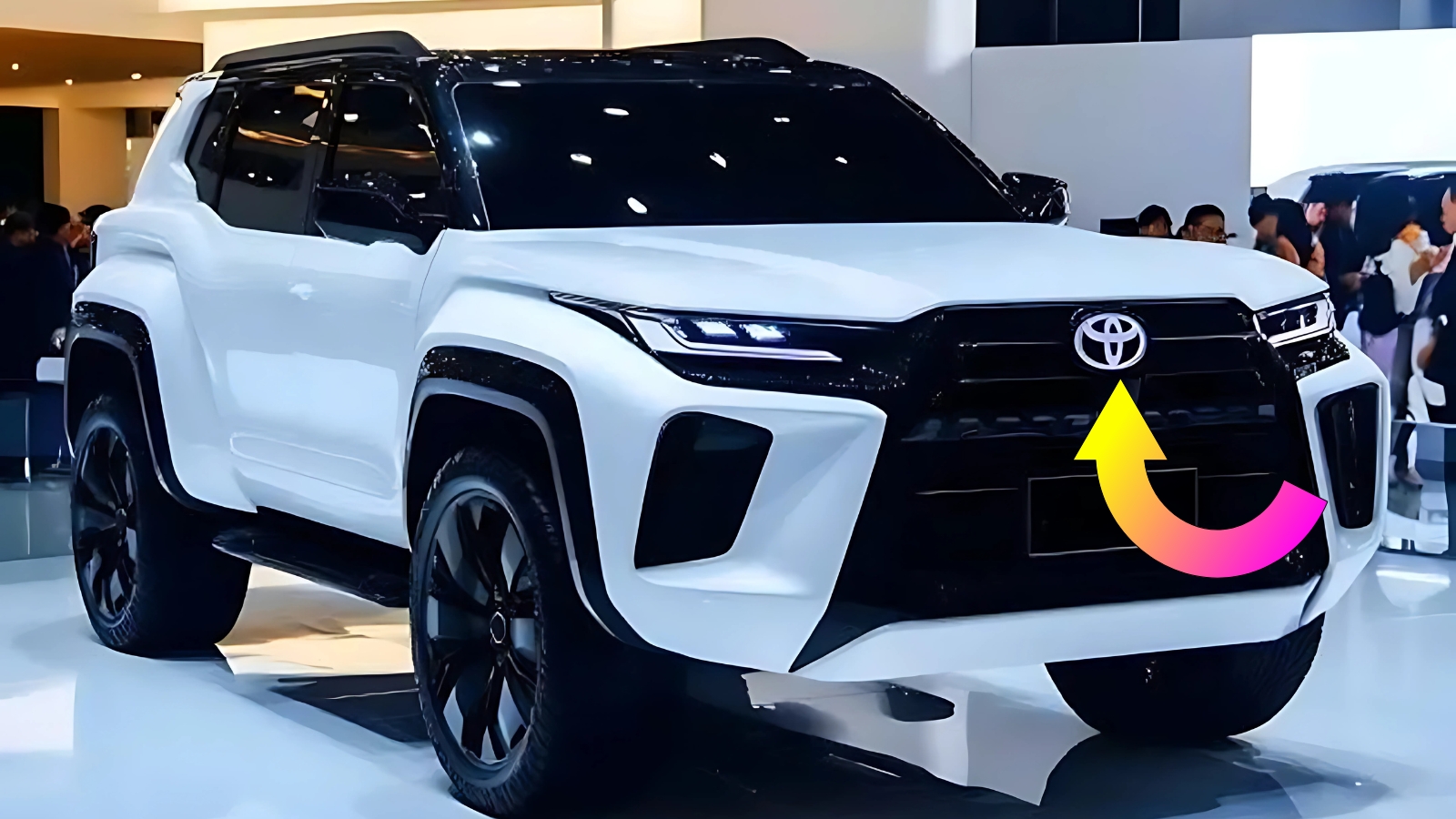2025 Toyota Fortuner : The automotive landscape is witnessing a significant transformation as Toyota prepares to introduce hybrid technology to its iconic Fortuner SUV. With the 2025 model year marking a pivotal moment in the vehicle’s evolution, the Japanese automaker is set to combine the Fortuner’s legendary off-road prowess with cutting-edge mild-hybrid technology. This strategic move promises to deliver improved fuel efficiency and enhanced performance without compromising the SUV’s renowned capability and durability.
Neo Drive Technology: The Heart of Innovation
At the core of this transformation lies Toyota’s sophisticated 48-volt mild-hybrid system, badged as “Neo Drive” for the Indian market. (2025 Toyota Fortuner) The system pairs the proven 2.8-liter four-cylinder turbo-diesel engine with an advanced electric motor setup, delivering a combined output of 204 horsepower and 500 Newton-meters of torque. This represents a notable improvement, with the mild-hybrid system contributing an additional 16 horsepower and 42 Nm of torque to the overall performance equation.
The mild-hybrid architecture comprises three essential components: a belt-integrated starter generator that replaces the conventional alternator, a compact 48-volt lithium-ion battery pack, and a DC-DC converter. This intelligent system captures energy during deceleration and braking, storing it for later use to assist the engine during acceleration and reduce load during cruising conditions.
Efficiency Gains Without Compromise
Toyota’s engineers have achieved something remarkable with the Fortuner Neo Drive variants. The mild-hybrid system delivers approximately 5% better fuel efficiency compared to the standard diesel model, with the South African-spec version claiming an impressive 13.15 kilometers per liter. This improvement comes without sacrificing the vehicle’s legendary towing capacity, payload capability, or off-road performance—crucial factors for Fortuner buyers who depend on their vehicles for both work and adventure.
The integration of an intelligent start-stop system further enhances efficiency in urban environments. When the vehicle comes to a halt in traffic, the engine seamlessly shuts off to save fuel and reduce emissions. Upon pressing the accelerator, the enhanced starter generator ensures smooth and rapid engine restart, eliminating the jarring sensations often associated with conventional start-stop systems.

Launch Timeline and Market Positioning
The Fortuner Neo Drive variants have already made their debut in the Indian market as of June 2025, with deliveries commencing from the third week of the month. Priced at Rs 44.72 lakh for the standard Fortuner Neo Drive and Rs 50.09 lakh for the Legender Neo Drive variant, these models represent a Rs 2 lakh premium over their non-hybrid counterparts. This positioning reflects the value addition of the hybrid technology while maintaining competitive pricing within the premium SUV segment.
Industry insiders suggest that a next-generation Fortuner could arrive later in 2025, potentially introducing more comprehensive hybrid options or even a full hybrid system. Some reports indicate the possibility of a new 2.0-liter turbocharged petrol engine with multiple power outputs, ranging from 300 to 600 horsepower, though these remain speculative at this stage.
Enhanced Features for Modern Expectations
Beyond the powertrain improvements, the 2025 Fortuner Neo Drive variants introduce several welcome additions to the feature list. A 360-degree camera system addresses visibility concerns in tight spaces, while a wireless smartphone charger keeps devices powered during long journeys. The vehicles retain their comprehensive safety suite, including seven airbags, hill descent control, traction control, and ISOFIX child seat anchors.
The interior receives subtle updates, including dual-tone leather upholstery that distinguishes the hybrid variants from their conventional siblings. However, some enthusiasts note the absence of features like ventilated rear seats, a panoramic sunroof, and Level-2 ADAS capabilities—amenities increasingly expected in this price segment.
Market Impact and Future Outlook
The introduction of hybrid technology to the Fortuner lineup represents more than just a product update; it signals Toyota’s commitment to its multi-pathway approach toward carbon neutrality. By offering electrified options across its portfolio, including the successful Innova Hycross and Urban Cruiser Hyryder, Toyota is catering to evolving consumer preferences while maintaining the core attributes that made these vehicles popular.
The Fortuner’s hybrid evolution also reflects broader market trends, where traditional body-on-frame SUVs are adapting to meet stringent emission norms and changing consumer expectations. With competitors likely to follow suit, the premium SUV segment is poised for an electrification wave that promises better efficiency without sacrificing capability.
Royal Enfield Classic 350 launched for powerful peoples – looks is dangerous
2025 Toyota Fortuner The Road Ahead
As the automotive industry navigates the transition toward sustainable mobility, the 2025 Toyota Fortuner Neo Drive variants demonstrate that electrification and traditional SUV values can coexist harmoniously. The mild-hybrid technology offers tangible benefits in fuel efficiency and performance while preserving the ruggedness and reliability that have made the Fortuner a household name across emerging markets.
For potential buyers, the Fortuner Neo Drive presents an intriguing proposition: the opportunity to embrace cleaner technology without compromising on the go-anywhere capability that defines the Fortuner experience. As Toyota continues to expand its electrified portfolio, the Fortuner’s hybrid journey marks just the beginning of what promises to be an exciting evolution in the SUV segment.